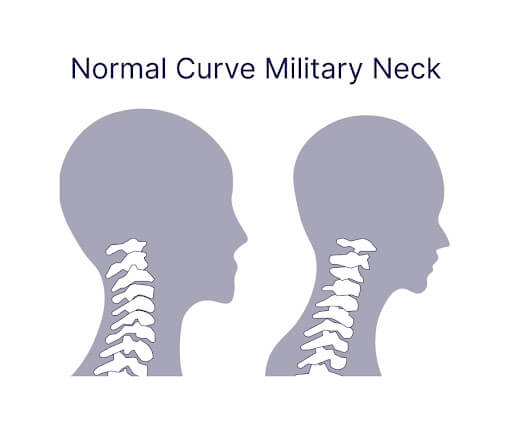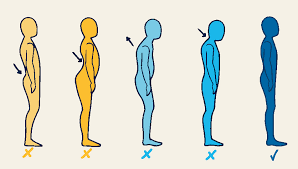

In today’s digital age, bent neck posture is increasingly common, especially due to prolonged screen use.
This posture, where the head tilts forward unnaturally, can severely impact the alignment of the upper back.
A misaligned upper back not only leads to musculoskeletal issues but also impairs overall posture and health.
This article delves deep into the intricate relationship between a bent neck and upper back alignment, backed by scientific evidence and real-life examples.
Article Index
- Introduction to Neck and Upper Back Alignment
- Importance of the cervical-thoracic connection.
- Mechanics of Neck Posture and Its Impact on the Upper Back
- The role of cervical curvature in supporting the thoracic spine.
- How a Bent Neck Alters Upper Back Biomechanics
- Effects on muscles, ligaments, and vertebral alignment.
- Symptoms Associated with Upper Back Misalignment
- Pain, restricted movement, and chronic discomfort.
- Case Studies Highlighting Real-Life Impacts
- Examples of individuals suffering from bent neck-induced upper back issues.
- Scientific Evidence Linking Bent Neck to Upper Back Misalignment
- Key studies and findings.
- Conclusion
Introduction to Neck and Upper Back Alignment
The neck, often referred to as the spine’s MVP, supports the head like a delicate yet crucial pedestal, perfectly aligned with the upper back, or thoracic spine.
Together, they function like a well-oiled suspension bridge, ensuring balance, mobility, and stability. But imagine if the bridge’s pillars leaned forward—chaos would ensue!
Similarly, when the neck bends excessively, it throws the upper back into disarray, disrupting its natural curvature.
This misalignment places undue stress on the supportive muscles, ligaments, and joints.
The result?
Postural imbalance, aches, and a strong reminder that even a small tilt can cause big trouble.
Mechanics of Neck Posture and Its Impact on the Upper Back
The cervical (neck) and thoracic (upper back) spine are integral, interconnected components of the spinal column, working together to support posture and movement.
Proper alignment of the cervical spine preserves the natural “S-curve” of the spine, ensuring even weight distribution and minimizing mechanical strain.
This alignment is critical as the human head, weighing approximately 10–12 pounds, places significant force on the spinal column.
When the neck bends forward—a condition known as forward head posture—the perceived weight on the thoracic spine increases exponentially, leading to structural imbalances and upper back misalignment.
Scientific research supports this connection.
A pivotal study in Clinical Biomechanics (2005) revealed that forward head posture amplifies the load on the thoracic spine, intensifying stress on muscles, ligaments, and intervertebral discs.
This additional strain not only causes discomfort but also contributes to thoracic kyphosis (an exaggerated upper back curve) and joint dysfunction.
Moreover, research published in the Journal of Electromyography and Kinesiology (2005) demonstrated that forward head posture activates compensatory mechanisms in the thoracic spine, overworking the trapezius and rhomboid muscles.
These findings underscore how disruptions in cervical alignment cascade into the thoracic spine, emphasizing the importance of maintaining proper neck posture for overall spinal health.
How a Bent Neck Alters Upper Back Biomechanic?
Let’s take this up in a simplified manner:
Muscle Overactivation and Fatigue:
When the neck bends forward, the muscles of the upper back, particularly the trapezius and rhomboids, are placed under significant strain to counteract the weight of the head.
For every inch the head moves forward, its effective weight on the upper back increases by approximately 10 pounds.
This constant overactivation leads to muscle fatigue, tightness, and the development of a hunched posture over time.
A study in Clinical Biomechanics (Griegel-Morris et al., 1992) highlighted that forward neck posture significantly increases trapezius muscle activity, predisposing individuals to chronic upper back pain.
Ligament Strain and Joint Stress:
Bent neck posture overstretches the posterior cervical ligaments while compressing anterior structures, creating an imbalance that extends to the thoracic spine.
This imbalance increases ligament tension in the upper back, destabilizing joints and contributing to chronic discomfort.
Research published in Spine (2015) found that prolonged neck misalignment can lead to thoracic joint dysfunction, exacerbating upper back pain and stiffness.
Vertebral Misalignment:
Prolonged forward neck posture compresses the thoracic vertebrae, flattening the natural curvature of the upper back.
This vertebral misalignment reduces spinal mobility, impairs load distribution, and places undue stress on intervertebral discs. Over time, these changes heighten the risk of degenerative disc disease.
A study in Physical Therapy Science (2016) demonstrated that correcting forward head posture improved thoracic vertebral alignment and reduced back pain.
These biomechanical disruptions illustrate the cascading impact of a bent neck on upper back health, underscoring the importance of maintaining proper alignment.
Symptoms Associated with Upper Back Misalignment
A bent neck does not just look uncomfortable—it can wreak havoc on your upper back in sneaky and persistent ways. When your head leans forward even slightly, it throws off your spine’s natural alignment and begins to strain the muscles, joints, and nerves of the upper back.
Let’s explore the symptoms this misalignment can bring along:
Chronic Pain:
When neck posture goes south, the upper back often bears the brunt of the tension. Tightness in this area can trigger a dull, throbbing pain or sudden sharp stabs that linger for days or even weeks.
Limited Range of Motion:
Misaligned vertebrae stiffen up the upper back and neck, making everyday movements—like turning your head to reverse your car or reaching up for a shelf—feel stiff and restricted.
Postural Imbalance:
That classic hunch does not just look bad—it shifts your body’s center of gravity. Your muscles overcompensate to keep you upright, which stresses joints in your hips, shoulders and even knees.
Neurological Symptoms:
A severely misaligned upper spine can press on nearby nerves, leading to tingling, numbness, or even radiating pain down the arms and into the fingers.
Muscle Fatigue and Weakness:
The deeper muscles of the neck and back can get worn out just trying to hold your head up all day. Over time, this constant effort can lead to chronic fatigue and a noticeable drop in strength.
Increased Muscle Stiffness:
Your upper trapezius and levator scapulae muscles can become tight and rigid. This not only makes it harder to relax but also causes stiffness when you wake up or sit too long.
Balance Issues:
When your neck juts forward, your body tries to rebalance itself. This shift can mess with your equilibrium, especially during quick turns or walking on uneven ground.
Headaches and Dizziness:
Neck misalignment can irritate nerves that connect to the head and inner ear, leading to tension headaches, dizziness, or a constant sense of mental fog.
Final Thoughts:
Your upper back is the unsung hero supporting your head all day. When things go out of alignment, your body starts sending distress signals—sometimes subtly, sometimes loudly.
Recognizing these symptoms early can help you take action, whether it is improving posture, strengthening supporting muscles, or seeking professional help.
Do not ignore that nagging upper back discomfort—your spine will thank you!
Scientific Evidence Linking Bent Neck to Upper Back Misalignment
A quick look at how science backs this claim:
Griegel-Morris et al., 1992 (Physical Therapy):
This landmark study explored the effects of forward head posture and its association with increased thoracic kyphosis.
The researchers found that a misaligned neck significantly impacts upper back curvature, emphasizing the interconnected nature of cervical and thoracic spinal alignment.
Poor neck posture can create a chain reaction, exacerbating upper back discomfort and mobility issues.
Cagnie et al., 2005 (Journal of Electromyography and Kinesiology):
This study highlighted the physiological consequences of forward neck posture on upper back muscles.
The researchers observed overactivation of the trapezius and other upper back muscles due to compensatory mechanisms, resulting in chronic pain and fatigue.
This muscle strain underlines how subtle cervical misalignments can lead to significant musculoskeletal stress.
Lau et al., 2010 (Spine):
Focusing on spinal biomechanics, this research demonstrated that poor cervical curvature alters thoracic spine mechanics.
The study found that forward neck posture increases thoracic vertebrae loading, leading to joint stress and a higher risk of degenerative changes in the upper back.
This study reinforced the need to maintain proper neck alignment for spinal health.
These findings collectively underscore how cervical posture intricately influences upper back alignment, causing both functional and structural issues.
What We Learnt So Far?
Think of your neck and upper back as dance partners—they need perfect coordination.
When the neck bends forward, this graceful partnership stumbles, causing muscle strain, joint dysfunction, and an awkward postural “slouch.”
Overworked upper back muscles, like the trapezius, cry out for help, while misaligned vertebrae such as C2 leads to long-term aches.
Studies prove that this disrupted alignment isn’t just a pain in the neck—it cascades through your entire spine.
So, give your posture a standing ovation by understanding these biomechanics, addressing poor habits, and ensuring this duo dances smoothly into good health.
References:


